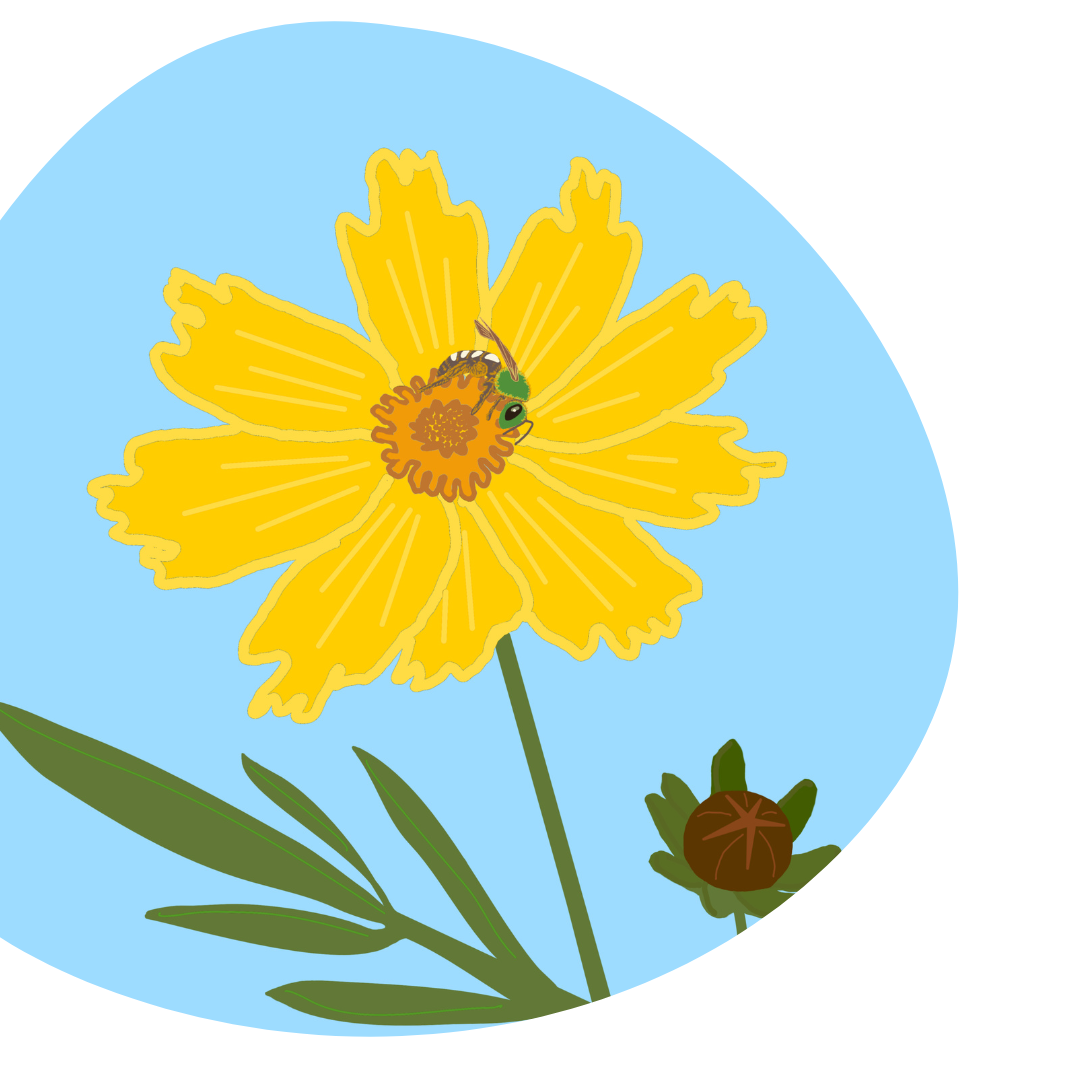April-July
Lanceleaf Coreopsis
Coreopsis lanceolata
In the language of flowers, the coreopsis means “to be always cheerful” and I certainly tend to smile when I see these sunny blooms. There are many varieties of coreopsis and there is some disagreement about whether lanceleaf coreopsis is a true Virginia native or whether it has been spread from its range elsewhere in North America and naturalized here. However, it is known to provide food for a large number of native bees, butterflies, and moths, so in my opinion it is certainly “native enough” for my garden. As an added benefit, it is one of the few native perennials that tends to bloom in the first year after planting - instant gratification!
Speaking of our bug buddies - the genus name of Coreopsis comes from the Greek word for bed bug, but only because the small, black seed reminded someone of the tiny bugs. An often used common name, tickseed, comes from a similar comparison of the tiny seed to a tick.
Pollinator Profile:
Coreopsis are known to be favorites of beekeepers, since its nectar lends a nice flavor to honey. However, this flower is an important nectar source not just for European honeybees, but for native bees as well. One example pictured in the digital illustration above is the bicolored sweat bee (Agapostemon virescens). According to the Tufts Pollinator Initiative, these bees live in small communal colonies underground and even help to babysit for each others’ young, guarding the nest while others go out to forage for pollen and nectar.
Check out the information below to see if this native might be a good fit for your yard!
Bloom Time: April-July
Height: 2'-3' H
Cultivation: Perennial, found in Virginia although its status as a native here is uncertain. Full sun, moist to dry soils, poor sandy or rocky soil, pH tolerant. Will adapt to fertile loam if well drained and taller plants are kept away from it. Drought tolerant but not reliably perennial. Easy to grow from transplants. In open areas with exposed ground, may spread aggressively. Propagate by division in fall.
Propagation by seed: Nutlets are mature and ready for collection about four weeks after flowers wither. Watch the inner series of bracts; when they begin to darken, it is time to collect. Remove chaff and store in sealed, refrigerated container. Plant in early spring.
Pollination/Insect Interaction: Pollinated by long- and short-tongued bees, wasps, flies, butterflies, skippers, day-flying moths and beetles. Host plant for some butterfly and moth larvae.
Other Wildlife Interaction: Foliage occasionally browsed by rabbits, groundhogs, deer, horses, livestock.
A small bee exploring a cheerful yellow bloom of lanceleaf coreopsis in the pilot plot at the Shenandoah County Landfill.
A coreopsis seed pod containing many small darkly colored seeds that give this plant its genus and common names.



